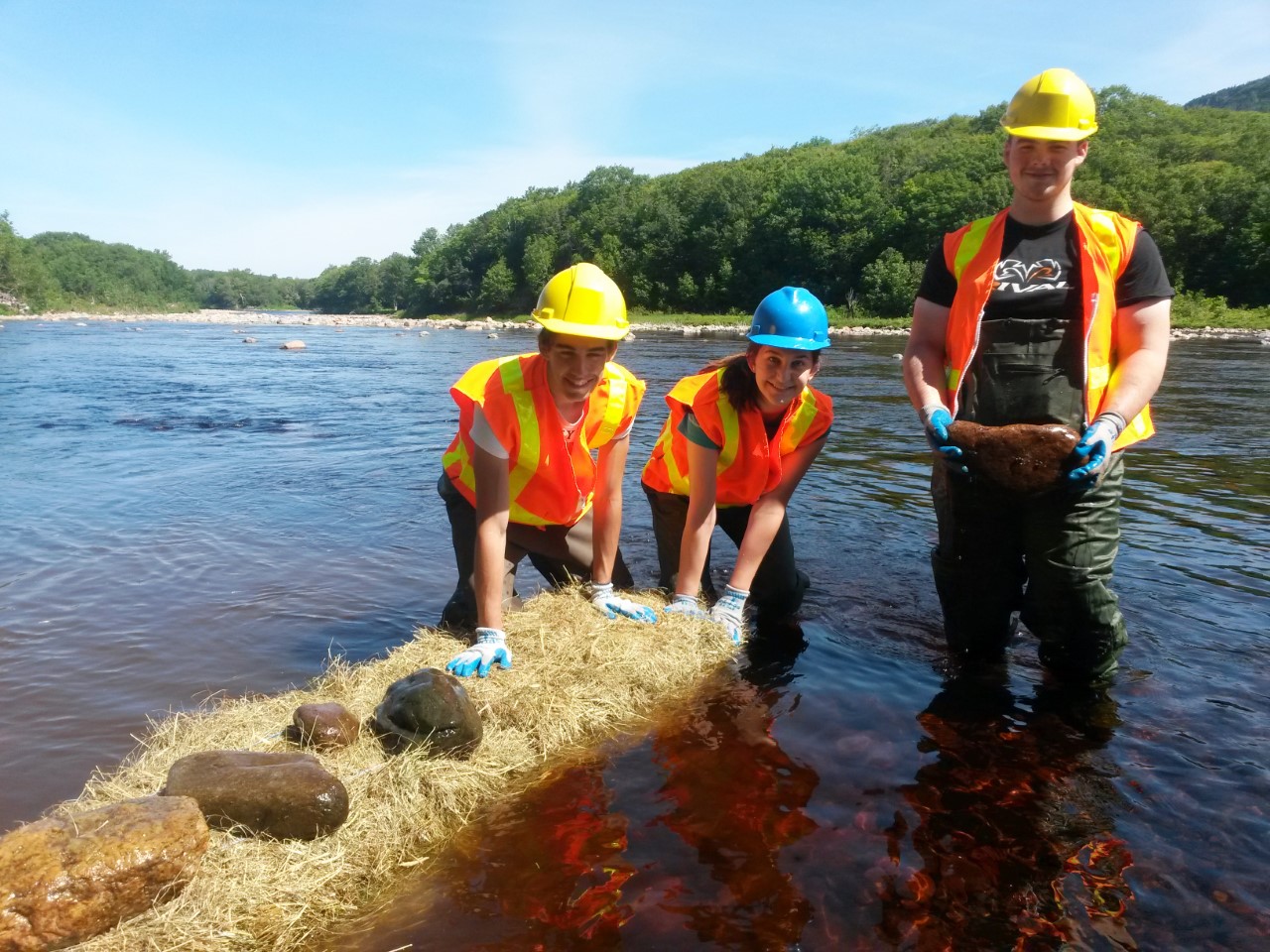L’Association du saumon de la rivière de Chéticamp
mai 12, 2017Il est toujours agréable de pouvoir suivre une voie large et précise lorsqu’on tente de se rendre à sa destination. Ce n’est pas différent pour les poissons.

L’Association du saumon de la rivière de Chéticamp (ASRC) a travaillé fort au cours des récentes années pour améliorer le passage du poisson dans la section inférieure de la rivière de Chéticamp. La rivière traverse presque entièrement le Parc national des Hautes Terres du Cap-Breton et le lieu d’une des deux seules remontées en santé de saumon au printemps qui restent en Nouvelle-Écosse.
Le projet est en cours depuis plusieurs années, et en 2016, la Fondation pour la conservation du saumon atlantique y a contribué en accordant une subvention de 7 500 $ pour la Phase III.
Le but de la Phase III était d’améliorer le passage du poisson et de rétablir l’habitat en eau douce pour le saumon atlantique. Cette phase consistait à poursuivre les travaux de 2014 et 2015 dont le but était d’installer des ouvrages en rivière – principalement des barres de décélération en pierres – aux lieux trop surélargis afin de rétrécir cette partie de la rivière et d’accroître sa profondeur.
L’ASRC s’est rendu compte que les travaux de rétablissement étaient nécessaires, car les effets humains – y compris les travaux forestiers précédents et la mauvaise installation de ponts – ainsi que des températures d’eau plus chaudes et des niveaux d’eau plus bas dans le mois crucial de juin, – ont eu des effets néfastes sur la rivière.
L’équipe de rétablissement de l’habitat s’est fixé trois objectifs pour les travaux de la Phase III :
- Améliorer le passage du poisson dans les remontées et les radiers surélargis dans la section inférieure de la rivière de Chéticamp en installant des ouvrages en rivière selon le plan de rétablissement;
- Accroître la productivité du saumon atlantique en améliorant l’habitat dans les radiers et remontées surélargis et accroître l’accès à l’habitat de frayage et d’élevage en amont;
- Réduire l’érosion des berges et l’affouillement des roseaux dans la section inférieure de la rivière de Chéticamp causés par le gel de la rivière et les embâcles qui se forment dans les sections surélargies.
La Phase III des travaux de rétablissement de l’habitat a permis de terminer les travaux avec succès à trois sites : en bas du Cabot Trail, au ruisseau Robert et au ruisseau Faribault. En tout, 15 ouvrages en rivière ont été aménagés et l’entretien de trois autres ouvrages a été effectué. Les travaux en rivière se sont traduits par environ 2 500 m (75 000 m2) d’habitat plus accessible et environ 1 300 mètres (longueur) et 45 000 m2 (superficie) d’habitat rétabli.
L’ASRC souligne que même si ces récents travaux ne rétabliront pas la rivière de Chéticamp entièrement à son état avant l’impact, ils amélioreront les conditions et augmenteront l’accès à un important habitat de frayage et d’élevage.
Même si le projet était au début un projet de trois ans, l’ASRC envisage au moins une quatrième année pour les travaux de rétablissement, et elle poursuivra les activités de surveillance et possiblement d’entretien des ouvrages.
